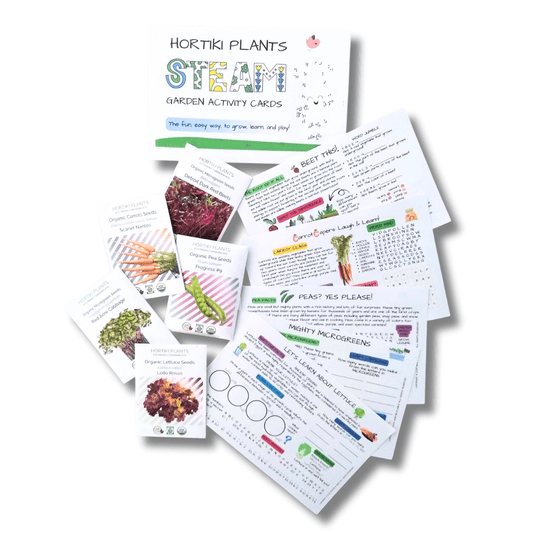Your January Container Garden: Start The New Year Off Right!
VICTORIA LEBEAUXHappy New Plant Year!
January is the perfect time of year to start growing. Growing your own fresh, winter veggies is a fun way to get your healthy resolutions off to a great start.
Want to eat healthy on a budget? Start an indoor winter garden? Add some greenery to your office? Whatever your goals, gardening can help you have a sustainable, healthy, and beautiful New Year.
Keep reading to learn how to start your January container garden now!

What plants thrive in winter?
The beauty of January gardening is that there are a wide variety of plants that can grow in the winter months.
- Leafy greens, radishes, beets, carrots, and microgreens are all fantastic options for January container gardens. These plants don’t require a lot of light, and they are cold tolerant. They can survive and even thrive in your winter garden no matter how cold it gets. Plus, they’re all so delicious and nutritious!
- Herbs like oregano, chives, rosemary, parsley, thyme, and basil are also easy options for winter gardening. These are great options for smaller spaces like kitchen windowsills. Herbs will also bring a delicious aroma to your space that will inspire your New Year healthy food creations. These plants grow quickly so start now and you’ll be able to enjoy fresh veggies and herbs all winter long.
How to get started
Starting your January container garden is easier than you think!
- The first step is to find a suitable space for your containers, such as a sunny window, balcony, patio, or porch.
- Microgreens and leafy greens can grow in shady, low light areas.
- Beets and carrots will do best with at least six hours of sunlight per day.
- Once you’ve chosen a spot for your containers, it’s time to buy your supplies. You’ll need containers, soil, fertilizer, and, of course, your seeds or seedlings. To create a sustainable home garden look for containers made from paper pulp or recycled materials. Go for organic, non-GMO seeds and soil, and stick with natural fertilizers like worm castings, kelp, and compost. Check out our winter garden kits such as our beets, carrots, kale, and tatsoi kits for outdoors. Or, try our herb, microgreen, arugula and spinach kits for indoor spaces.

Tips for success
If you’re looking to maximize the success of your January container garden, there are a few tips that you should keep in mind.
- First, pay attention to plant placement. Plants near heaters or vents can dry out quickly. Placing plants near windows or doors in the winter can slow their growth and cause cold damage to leaves.
- Water your plants regularly but first, ensure they really need water by checking two inches beneath the soil. The top layer of soil exposed to the air can sometimes look dry, while inside your planter, there is still plenty of moisture. An easy way to ensure your plants have enough hydration to thrive in the colder months is to put them in a tray and keep your tray filled with water. Plant roots will draw water up into the plant as needed.
- Rotate your planters every few days to ensure your plants grow straight and don’t bend toward the light.
- For root vegetables, thin out your plants a few weeks after starting seeds. Ensure they have plenty of room to grow and enough light, and they will thrive in January’s colder temps.
Let's get gardening!
If this all sounds too easy- it is! January container garden plants are low light, low maintenance plants, making this a great time to get into gardening. A January container garden is also a great project for beginner gardeners, or for those who want to start growing edible houseplants for the first time. With a little bit of prep and some regular maintenance, you’ll be able to enjoy a bountiful and beautiful winter container garden this year. So make a list, grab your supplies, and start the New Year off right - with a fresh, new January container garden!
Plant Love,
Victoria
Founder, Hortiki Plants



